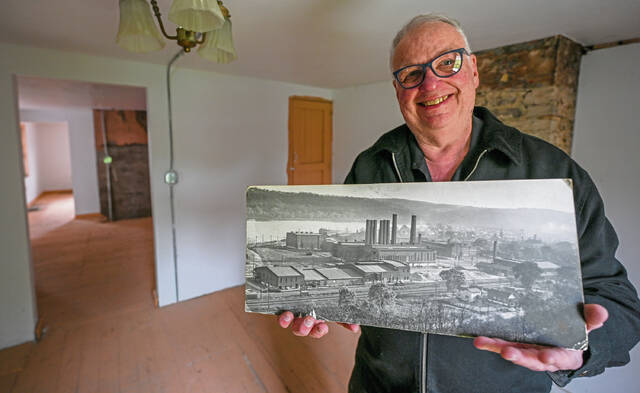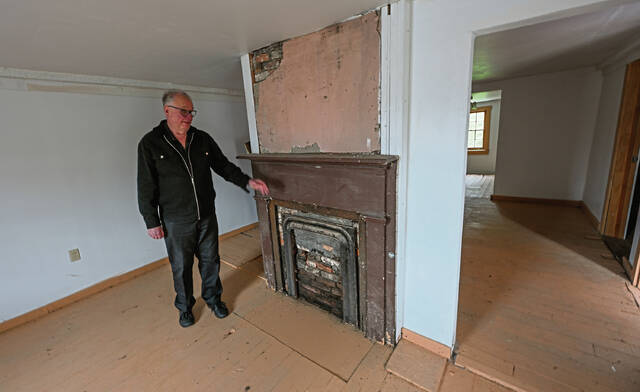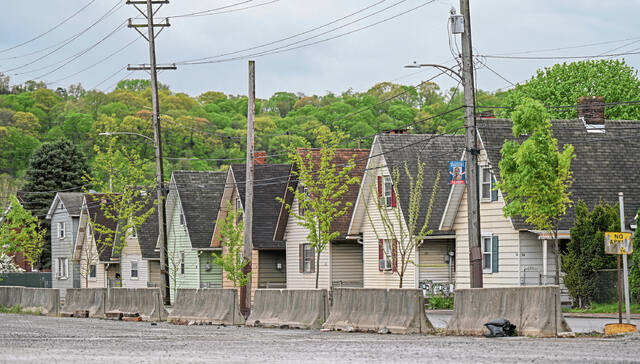Penn Salt Museum to give glimpse of early life in Natrona
Natrona artist Bill Godfrey has long been nagged by the history of the 1850s-era Penn Salt row houses along Federal Street.
“Oh, if these walls could talk,” he often tells people.
Godfrey’s advocacy group, Natrona Comes Together, purchased the Gothic revival cottage at 34 Federal St. in 2012 and set about preserving it for use as a public museum. Efforts were assisted by the Pittsburgh History & Landmarks Foundation.
Now, all the group needs are volunteers to get the site up and running.
“I’m reaching out to everyone for support or ideas,” Godfrey said. “We’d like to make it into a classroom or space where people can glimpse the rich history.”
The committee is working to get the small, four-bedroom house inspected, develop a mission statement and secure a budget for operating expenses.
“I’m very determined to see this through and open our doors,” Godfrey said.
Penn Salt Manufacturing Co. abutted the Allegheny River. It produced chemicals for home and industrial use.
The company created a small village for its workers with 150 wood-and-brick homes surrounding the factory. Employees were paid with “Penn Salt dollars” that were used for rent, paid to the company, and groceries, bought in the company store.
The manufacturer closed in the 1940s but not before reaching the national stage for its contributions — and also some scandals.
The plant played a large role in producing material from the Civil War through World War II. It was listed on a Nazi Germany hit list because the plant processed cryolite, used in aluminum production for war planes.
It also created DDT, the powerful pesticide whose hazards were exposed by Springdale-born scientist Rachel Carson in her 1962 book, “Silent Spring.” The pesticide ultimately was banned by the U.S. Environmental Protection Agency.
In 1967, the area where Penn Salt’s facilities were located was purchased by Allegheny Ludlum Steel Corp., now ATI.
Moving forward, the board and batten cottage will not only highlight mementos from Penn Salt but also will illustrate life in the neighborhood that some call a hamlet.
“I hope they get the feeling of what Natrona was like before,” lifelong resident Helen Strzesieski said.
“We were like a little Mayberry. We had the beautiful river on one side, the hills on the other side and a road coming into town.”
Strzesieski, 86, said the streets were lined with “beautiful stores” where she recalls buying a silk First Communion gown. There were meat markets, an A&P grocery store and many churches.
“The people were good,” she said. “We never had a key to our house.”
Strzesieski serves with Natrona Comes Together and also is on the board of the Tarentum History Center.
She said one of her best girlfriends grew up in a Penn Salt row house, and it struck her years later how the family managed to go about daily life in such a tiny space.
“They baked their own bread in the backyard oven,” she said. “It wasn’t fancy. It was just good living.”
Countless hours have been poured into transforming the row house. The group paid to remove asbestos, replace windows and construct a wheelchair-accessible restroom.
Patty Walters, a member of the group since its inception, said her garage has been filling with items over the years and she is eager to share them with others who are interested in days gone by.
The group has been collecting old photos, postcards and other mementos for donation or temporary display.
A small garage behind the house will be used for larger showpieces.
“I have the original wooden fixture that they used to tie the horses up to at the bank,” Walter said. “You can imagine how old that is.”
Because the Penn Salt Museum is small, displays will be turned over often, she said.
Mainly, they want the interior to be used as a learning center.
“I think it will be great for a little library or a place for the children to come and learn,” she said.
“I think there will be an interest. It’s a treasure.”
To learn more, email Godfrey at bill@billbanner.com.
Tawnya Panizzi is a TribLive reporter. She joined the Trib in 1997. She can be reached at tpanizzi@triblive.com.
Remove the ads from your TribLIVE reading experience but still support the journalists who create the content with TribLIVE Ad-Free.




